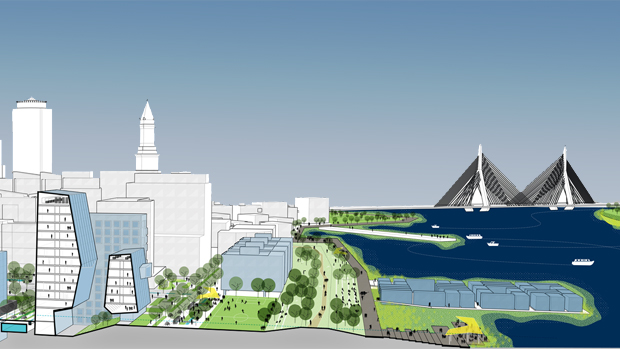Reflections on Resilience: Integration

 Sasaki
Sasaki

For millennia, the planet has evolved, adapting to ice ages, heatwaves, and major atmospheric changes with new habits and even species. This history—although sometimes hard to get our heads around—offers important insights for how we should approach the built environment today.
Planning for global evolution has typically been on the back burner until after a community is disrupted. But in the wake of recent natural disasters, desire for resilient, proactive, and integrated planning has spread nationally and globally.
Integrated planning and design considers all systems that contribute to or are affected by the environment in which they exist. This approach stretches across scales and disciplines initiating wide spread collaboration. To be effective, a singular plan must engage a large group of people—from local stakeholders, community members, and government officials to business leaders, scientists, and designers.
The planning effort should begin at the largest scale feasible, so that communities set macro goals, and each subsequent scale follows suit—eventually creating a holistic, adaptive plan.
For example, larger urban systems are extremely difficult to adapt once they have been implemented. On the East Coast, where infrastructure was devastated by Superstorm Sandy, the costs for rebuilding are huge. In the wake of a disaster, the pressure for fast, cheap redesign can create an even greater issue in the future. Through tragedy, cities have the chance to plan and build better.
Some communities adopted integrated planning processes decades ago. They have organized resiliency strategies as part of their planning and building guidelines, minimizing the need to correct course in the future.
Often the outcome of these integrated strategies is much greater than anticipated. When enhancing a city’s resiliency, other parts of the infrastructure are affected in positive ways—for example, ecological infrastructure and personal-scaled architecture.
Typically when we plan for resiliency, green infrastructure plays a major role—introducing flexible, open spaces that put adaptive green spaces back into the landscape of city structure. Floodable parks and terraced steps allow for public access to the waterfront otherwise lost by a sea wall.
Integrating green infrastructure not only allows a natural process to combat flooding, but also creates usable outdoor public space. When cities reintegrate natural systems that have enabled the planet to adapt naturally, they also provide an opportunity for people to experience more of nature even in the largest of cities.
Combining this green layer to thoughtful and adaptive architectures further strengthens the overall systematic city plan. If the integrated plan encompasses guidelines for renovation of building alongside reactive new building codes, the strength of the system overall increases. For example, Denmark is dedicated to renovation to reduce energy use and carbon emissions.
To protect our cities, we must embrace integrated planning that engages thought leaders at each scale and from every discipline. Using climate change as the impetus, we will not only create more resilient cities, but also happier cities in terms of people, the built environment, and the natural environment.